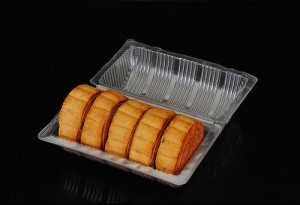Food packaging is an integral part of food commodities. Food packaging and food packaging boxes protect food and prevent biological, chemical, and physical damage from external factors when the food leaves the factory to the consumer. It can also have the function of maintaining the stable quality of the food itself. Convenience food is the first to show the appearance of food, attract the image of consumption, and has value other than material cost. China Printing Cloud Platform provides one-stop online solutions from food packaging design to food packaging printing, and combines different product requirements to provide economical, hygienic and fast food packaging printing solutions.
Many companies need to print decorative patterns, patterns or text on the packaging to make their products more attractive or descriptive. Good packaging can make products establish a high-quality image, improve product competitiveness, and promote product sales. It can effectively increase the propaganda of the company and increase its influence.
Food has always been preferred by people, and food packaging is more important.
1. Protect food and extend the shelf life of food
(1) Protecting the appearance quality of food produces certain economic benefits
During the entire circulation process, food has to go through handling, loading and unloading, transportation and storage, which can easily cause damage to the appearance of the food. After the food is packaged inside and outside, the food can be well protected to avoid damage.
(2) Protect the original quality of food and extend the shelf life of food
The quality of food will change and deteriorate during the entire circulation process.
The food itself has certain nutrients and moisture, which are the basic conditions for the production and reproduction of bacteria, mold, yeast, etc. When the food is stored at a temperature suitable for their reproduction, it will cause the food to spoil. If the food is packaged aseptically or processed by high temperature sterilization and refrigeration after packaging, it will prevent the occurrence of food spoilage and extend the shelf life of the food.
At the same time, the food itself has a certain amount of water. When the content of these water changes, it will cause the change or deterioration of the food flavor. If the corresponding moisture-proof packaging technology is adopted, the above phenomenon can be prevented and the shelf life of food can be effectively extended.
Moreover, when food is in circulation, when it is directly irradiated by sunlight and light, and at high temperatures, it is easy to cause food to oxidize, change color, and change flavor. For example, use the corresponding vacuum packaging, inflatable packaging and other technologies and corresponding packaging. Material. It can also effectively extend the shelf life of packaged food.
2 Packaged food is convenient for circulation
Some packaging is a container for food circulation. Such as bottled alcohol, beverages, canned food, milk powder in the field, etc., these packaged bottles, cans and bags are not only packaging containers, but also transfer tools for food circulation and sales. It brings great convenience to food circulation
3. Increase the variety of convenience foods that are convenient for consumers and have local flavors. They can only be circulated after being packaged. The exchange of famous and high-quality foods from all over the country will increase people’s daily food types.
Furthermore, fresh foods such as quick-frozen dumplings, packaged meals and preservation techniques can be convenient for people to eat
4. Convenient steaming food to prevent food contamination, using special packaging technology
When the food is in circulation, it must be in contact with the container and human hands, which is easy to cause the food to be contaminated. The packaged food can avoid this phenomenon, which is beneficial to the health of consumers.
5. Promote the rationality and planning of food circulation
Some fresh foods are perishable and difficult to transport, such as fruits and aquatic products. Various cans are made in the place of production, which can reduce waste, reduce transportation costs, and promote the rationality and planning of food circulation. .
6. Promote food competition and increase food sales
Xunda Clamshell Packaging, Your Clear Plastic Packaging Manufacturer. If you are interested in our products. Please feel free to contact us. We are looking forward to building business relationship with customers worldwide.
